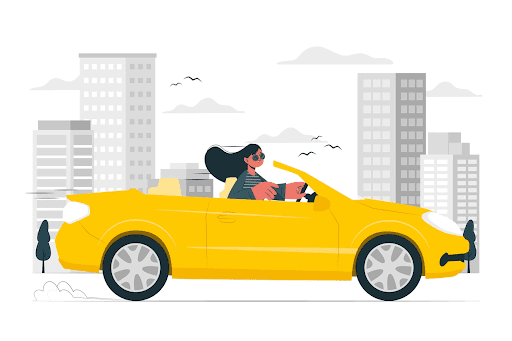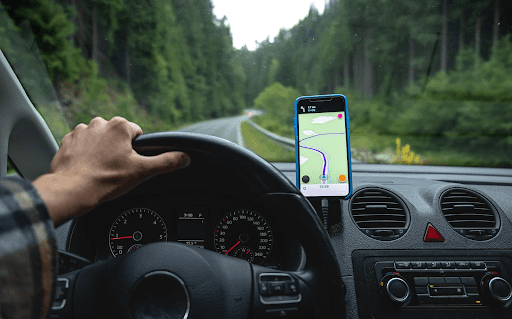Being a safe driver starts with taking the time to learn about the basics of driving. Knowing the rules of the road will help you stay safe on the roads, and knowing the basics of defensive driving will help you avoid dangerous situations. Here are 11 tips to help you become a safer driver:
1. Must Join Professional Driving Course
If you want to become a licensed driver in any countries, you’ll need to take a professional driving course. These courses will teach you everything you need to know about the driving test and teoriprøven for bil (theory tests for cars), so you’ll be able to pass both with ease. They’ll also provide you with the guidance and support you need to be a successful driver.
Confidence is critical when driving. The more confident you are, the better control you will have over your driving. If you already know how to drive but lack confidence on the roads, consider joining an advanced driving course. This will help gain the confidence needed to become a good driver.
2. use your turn signals
It is important to use your turn signals when you are driving. This let other drivers know what you are doing and helps to prevent accidents. When you are driving, you should always be aware of your surroundings and use your turn signals when changing lanes or making a turn.
3. Be aware of your surroundings
In order to stay safe, it is important to be aware of your surroundings at all times. Pay attention to who and what is around you, and trust your gut if something doesn’t feel right.
If you are walking alone, keep your head up and avoid looking at your phone or other devices that will distract you from your surroundings. Be aware of any suspicious people or activity, and don’t hesitate to call for help if you feel unsafe. In general, just use common sense and stay alert to stay safe.
4. Drive defensively
When you are driving, always be aware of your surroundings and be prepared to react to any potential hazards. Drive defensively by remaining alert and focused on the road, and being aware of the actions of other drivers around you.
Always use your turn signals when changing lanes or making turns, and yield the right-of-way to other drivers when appropriate. Be cautious when driving in adverse weather conditions, and always follow the posted speed limits. By driving defensively, you can help to prevent accidents and keep yourself and others safe on the road.
5. Obey the speed limit
When driving on any road, it is important to obey the posted speed limit. Not only is this a law in most places, it is also a safety issue. Driving too fast makes it more difficult to control the vehicle and increases the chances of an accident. It can also lead to more serious accidents, as higher speeds make it more likely that injuries will be sustained.
Obeying the speed limit is not only a way to avoid getting a ticket, it is also a way to keep yourself and others safe on the road. If you are driving in an area where the speed limit is not posted, it is a good idea to err on the side of caution and go slower rather than faster. This will help ensure that you arrive at your destination safely.
6. Be prepared for the unexpected
In today’s fast-paced and ever-changing world, it’s more important than ever to be prepared for the unexpected. That’s why it’s a good idea to have an emergency fund to cover unexpected expenses, like a job loss, medical bills, or car repairs. It’s also a good idea to have a plan B in case your first choice doesn’t work out.
For example, if you’re hoping to get a promotion at work, but it doesn’t happen, don’t give up – look for other opportunities to advance your career. And finally, don’t forget to take care of yourself – both physically and mentally. If you’re not in good shape, it will be harder to deal with unexpected challenges. So make sure to eat well, exercise, and get enough sleep.
7. Don’t text and drive
Most people know that texting and driving is dangerous. Despite this knowledge, many people continue to text and drive because they think they can do it safely. The truth is, no one can text and drive safely. Every day, people are killed or seriously injured because they were texting while driving. Texting while driving is so dangerous because it takes your eyes off the road, your hands off the wheel, and your mind off of driving.
When you are texting, you are not focused on driving, and you are more likely to make a mistake. Even a small mistake can have tragic consequences. Texting while driving is against the law in many states, and for good reason. It is simply too dangerous to do. If you must text, pull over to a safe location first. Otherwise, wait until you can stop to text. Remember, no text is worth a human life.
8. Keep your eyes on the road
Most car accidents are caused by driver error, which is why it is so important to keep your eyes on the road. It only takes a split second of distraction to cause an accident, so it is important to be aware of your surroundings at all times.
If you are looking at your phone, changing the radio, or eating, you are not paying attention to the road, and you are putting yourself and others at risk. Drive defensively and always be prepared for the unexpected. By keeping your eyes on the road, you can help prevent accidents and keep yourself and others safe.
9. Don’t tailgate
Tailgating is when a driver follows another vehicle too closely. It can be dangerous because if the lead driver has to brake suddenly, the trailing driver may not have enough time to react and could rear-end the other vehicle. Tailgating is often the result of aggressive driving, and it can escalate into a road rage incident.
If you’re being tailgated, don’t engage the other driver. Instead, try to get out of their way if possible, or call the police if you feel threatened. If you’re following another vehicle too closely, back off. Not only is it dangerous, but it’s also illegal in most states. give yourself enough space to brake if the driver in front of you suddenly stops.
10. give yourself enough time to react
When you’re driving, it’s important to give yourself enough time to react to potential hazards. This means not driving too close to the car in front of you, and giving yourself time to brake if someone cuts you off.
It also means being aware of your surroundings and not driving too fast for the conditions. If you can’t see around a corner, slow down and be prepared to stop. By giving yourself enough time to react, you’ll be a safer driver and less likely to get into an accident.
11. Don’t drive under the influence
Most people know that driving under the influence of alcohol or drugs is dangerous. But what many don’t realize is that even small amounts of alcohol or drugs can impair your ability to drive.
Just because you feel fine doesn’t mean you are fine to drive. Even over-the-counter and prescription drugs can affect your driving. It’s important to read the labels on all medications, even if they are legal.
Many drugs warn against operating machinery or driving while taking them. Alcohol is a particularly dangerous drug to use before driving. It slows your reaction time, impairs your ability to make decisions, and reduces your coordination. Even one drink can make it unsafe to get behind the wheel.
If you’re taking medication or have been drinking, the best thing to do is not drive. Use a ride-sharing service, call a taxi, or ask a friend for a ride. It’s not worth risking your life or the lives of others by getting behind the wheel when you’re not fit to drive.
Video Guide
5 Defensive Driving Strategies To Become A Safer, Smarter Driver
Being a safer driver takes practice. Being aware of your surroundings and being patient will allow you to stay safe on the road. I hope these tips help you become a safer driver and stay safe.































